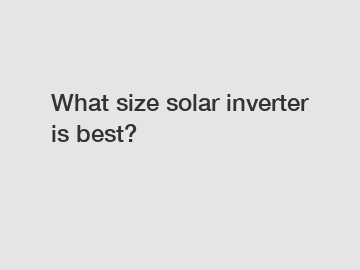Which Pneumatic Test Method Ensures Piping Integrity?
Maintaining the integrity of piping systems is of utmost importance in various industries, as any failure can lead to severe consequences, including safety hazards, environmental contamination, and significant financial losses. Therefore, testing procedures play a vital role in ensuring that pipes are fit for their intended use. Among the available testing methods, pneumatic testing stands out as a versatile and reliable technique. In this blog, we will delve into the different pneumatic test methods employed to ensure piping integrity and highlight their effectiveness.
1. Hydrostatic Testing: A Traditional Approach.
Hydrostatic testing has been widely used for decades to assess piping integrity and detect leaks or weaknesses. This method involves pressurizing the pipes with water to a predetermined level, typically at 1.5 times the maximum allowable working pressure (MAWP). By monitoring pressure drop and visually inspecting for leaks, hydrostatic testing provides a thorough evaluation of the system's tightness, making it an invaluable part of quality control procedures.

2. Advantages and Limitations of Hydrostatic Testing.
Hydrostatic testing offers several advantages. Firstly, it has a high degree of accuracy, allowing for the identification of even minor leaks. It also enables the assessment of different components of the system, such as joints, valves, and fittings. Moreover, the presence of water during testing acts as a coolant, minimizing the risk of excessive heat buildup. Lastly, hydrostatic tests can be performed on both metallic and non-metallic pipes, making it suitable for a wide range of applications.
However, hydrostatic testing does have its limitations. It requires a significant amount of time to fill the pipes with water and thoroughly remove air pockets. Furthermore, disposing of large amounts of water after testing can be environmentally burdensome, especially in high-volume testing scenarios. Additionally, moisture can cause corrosion in metallic pipes if not properly dried post-test. These drawbacks have motivated the exploration of alternative pneumatic testing methods to overcome these limitations.
3. Introducing Pneumatic Testing.
Pneumatic testing utilizes compressed gases such as air or nitrogen to create pressure within the pipes, revealing any leaks or defects. This method offers an alternative to hydrostatic testing and has distinct advantages that make it suitable for various applications.
a) Increased Efficiency and Reduced Time: .
Compared to hydrostatic testing, pneumatic testing is faster and more efficient. It requires less time to pressurize the system and doesn't necessitate extended periods for draining water post-test. Consequently, pneumatic testing significantly reduces downtime during construction, repair, or maintenance activities, enhancing overall productivity.
b) Environmental Considerations:
Explore more:Energy
Revolutionizing Pipe Testing: How Does Nitrogen Maximize Results?
How do I know what power inverter to buy?
What is the difference between electric and air diaphragm pump?
Revolutionizing Car Wash Systems with 3-Phase Inverters
Which Pipeline Process Services offer the best value for money?
Demystifying Pipeline Process Services: The Ultimate Guide to Streamline Operations & Boost Efficiency
Unlike hydrostatic testing, pneumatic testing generates no water waste, making it particularly advantageous in areas with limited water supply or strict environmental regulations. Additionally, by employing nitrogen as the testing medium instead of air, the risk of corrosion in metallic pipes due to moisture is eliminated.
4. The Different Pneumatic Test Methods.
a) Pressure Decay Test:
The pressure decay test measures the pressure drop over a specified time period, usually minutes or hours. A gradual reduction in pressure indicates the presence of leaks, which can be quantified based on the rate of decline. This method is highly accurate in identifying leaks but may not detect very small or transient leaks.
b) Bubble Test:
The bubble test involves applying soapy water or leak detection solution to the exterior of the pipes and pressurizing them. The formation of bubbles indicates the presence of leaks. This method is quick, easy to implement, and cost-effective, making it suitable for routine inspections. However, it may not be as accurate as other methods when detecting small or internal leaks.
c) Mass Spectrometer Test:
The mass spectrometer test uses a gas analyzer to detect the presence of specific gases, often helium, within the system. Helium, being a small molecule, is ideal for leak testing as it has the ability to pass through micro-cracks. This method is highly sensitive and can identify even the smallest leaks with a high degree of accuracy.
Conclusion:
In the realm of pneumatic testing, a combination of methods ensures thorough assessment and detection of leaks, weaknesses, or defects, thus guaranteeing piping integrity. While hydrostatic testing remains a reliable and widely accepted technique, pneumatic testing offers advantages that make it suitable for various scenarios. The pressure decay test, bubble test, and mass spectrometer test each have their strengths and weaknesses, allowing flexibility in choosing the most appropriate method for specific applications. By employing the right pneumatic test method, industries can enhance safety, productivity, and environmental sustainability, ensuring the continued integrity of their piping systems.
Contact us to discuss your requirements of Sub-sea Pipeline Testing, Sub-sea Pipeline Testing News, Electric Heat Tracing Design. Our experienced sales team can help you identify the options that best suit your needs.
Explore more:Which solar inverters are made in Germany?
Is BIPV expensive?
Which Innovative Technologies Enhance Diaphragm Pump Efficiency?"As diaphragm pumps play a crucial role in various industries, are there any groundbreaking technologies available to enhance their effi
What is the ASME standard for pneumatic testing?
How do you maximize solar gain?
Maximize Energy Efficiency with Three-Phase Hybrid Inverters
Is clipping bad for an inverter?










